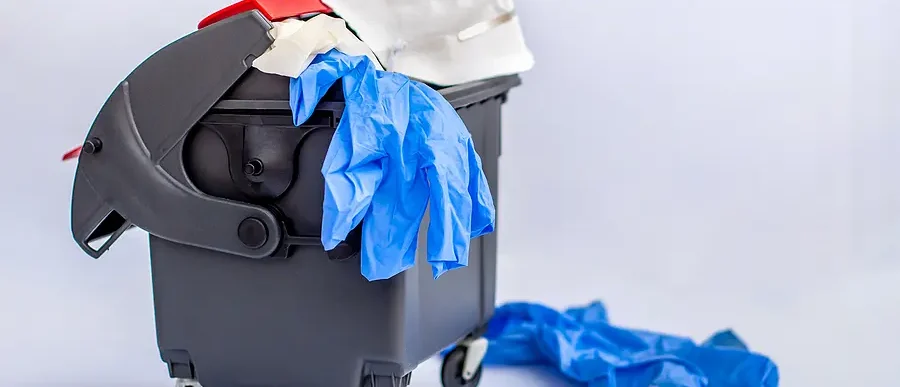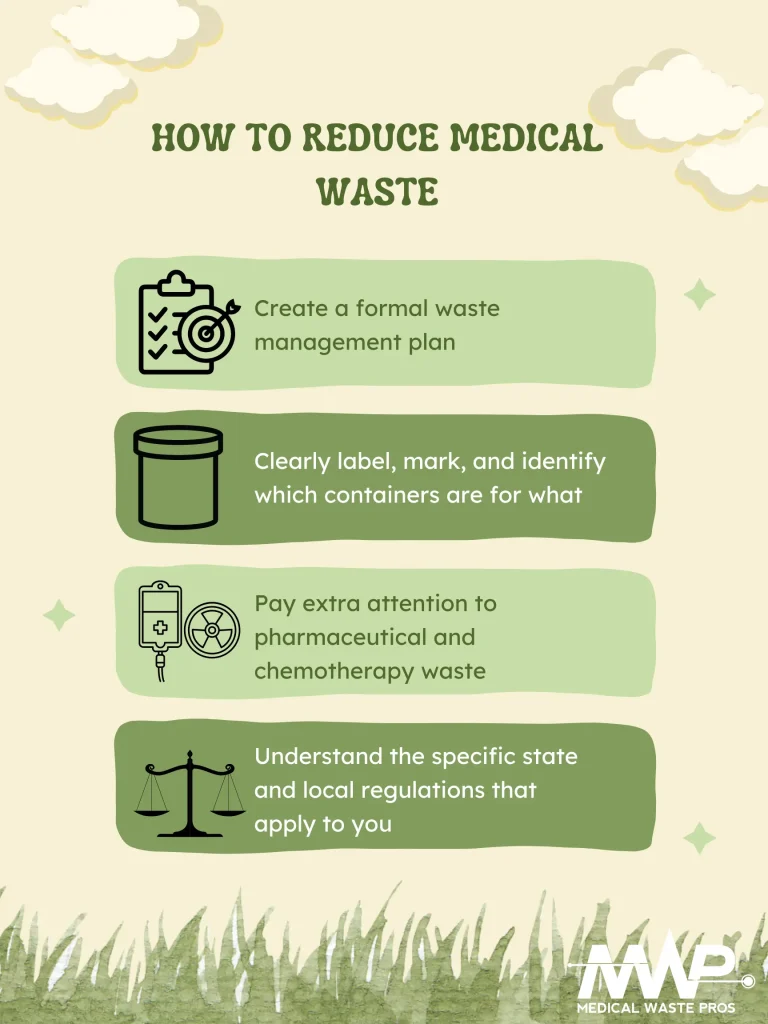Tips to Reduce Medical Waste

The amount of medical waste produced a year amounts to a staggering 6 million tons. Every medical practice should learn how to reduce their medical waste, both for financial and environmental reasons.
On the financial side, the savings add up quickly. Neurosurgeons at a Canadian hospital saved nearly $600,000 in a year by reducing their disposable use, and a hospital in Britain saved $120,000 by following proper guidelines around glove usage.
The damages to the environment are severe as well. In the U.S. and around the world, we fill up landfills quickly. In 2021, there were 3,000 active landfills and 10,000 closed ones. That amounts to millions of acres of habitat and potential living space churned up for our trash. Reducing waste means reducing that land use, and also reduces the harmful methane emissions that come from landfills.
How to Reduce Medical Waste

Create a Formal Waste Management Plan
The first step in addressing any problem always comes down to planning. You need to know what your current processes are, if they exist, and then find a way to refine them. Once you determine which areas you can reduce, put it down in writing so there are clear and accessible guidelines to follow.
Train Your Employees
Once you create your plan, you need employees to follow it. Sit your employees down and go over the plan with them. Field questions, address concerns, and even take in new ideas based on their feedback. Make sure that new employees receive training on the plan as well, so everyone stays on the same page.
Clearly Mark and Separate Containers
One way to reduce your waste footprint is to make sure it goes to the right place. Clearly marked containers and signage around them will help both your patients and employees place their waste in the correct bin. If cardboard or just standard non-hazardous waste goes into a hazardous waste container, rather than a recycling bin, that means it will get throw in to a regulated landfill or incinerator, instead of a recycling plant.
Ensure Chemotherapy Waste or Pharmaceutical Waste Goes to the Right Place
Due to regulations surrounding their disposal, these items need to go into their own separate bins. If improperly disposed of, not only do they go on to pollute the environment, but they can lead to hefty fines for your organization.
Understand the Local and State Regulations Governing You
Local and state regulations, along with those from the CDC, FDA, and other federal regulatory agencies will govern how you dispose of your waste. These regulations govern waste disposal from radioactive chemotherapy waste to plastic disposal, and following them is important, as it protects the environment and your practice’s bottom line.
The Simplest Way to Reducing Your Medical Waste: Plastics, Paper, and Food Waste
Often when you think of your medical waste, what immediately comes to mind are sharps, chemotherapy waste, and pharmaceutical waste. However, roughly 85% of waste produced in a medical environment falls into the non-hazardous category.
This includes plastics, paper, and cardboard. Properly recycling this non-hazardous waste in line with state and federal guidelines can go a long way to reducing your overall waste footprint.
Take Care of Your Medical Waste with Medical Waste Pros
While you should just put most of your non-hazardous medical waste in the recycling bin, Medical Waste Pros can help with everything else. We partner with trusted and experienced providers around the country to deal with all of your medical waste needs. Give us a call at (888) 755-6370, or fill out the form on the page, and we’ll find a medical provider that suits your organization’s needs within minutes.










